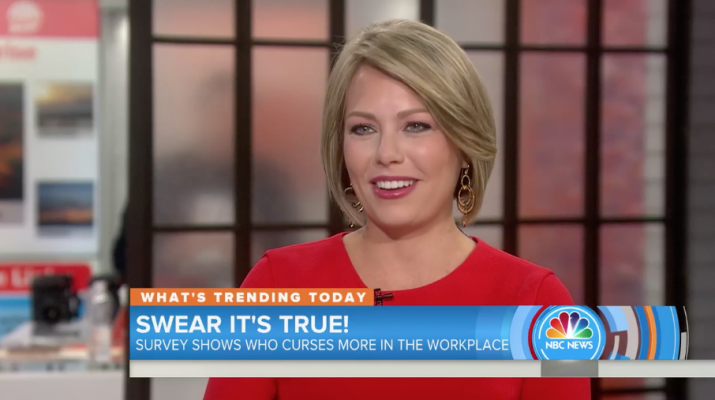If you’re a marketing content writer like me, you know the pain.
You need a fresh angle for the company blog, but your brainstorm is not going far enough. You’re at risk of adding one more irrelevant drop of content to an ocean of unsurprising, unoriginal articles that fail to generate SEO impact, engagement, and (naturally) conversions. As things stand, you can’t even dream of getting any media interest in your story.
Brad Sanzenbacher and Brianna Miller were about to run into that same roadblock.
At Wrike, a work management platform based in Silicon Valley, Brad is a corporate communications manager and Brianna is a content marketing manager. Their goals will probably sound familiar to other content strategists, editors, and writers:
- They need to generate brand awareness for Wrike, getting more prospects to know the brand and identify it as a solution to their challenges.
- And they need to establish Wrike as a thought leader in the space with trending content and useful information that keep their customers and prospects engaged with the brand.
Problem was, Brianna says, Wrike used to publish “content that pulled data from other sources. We wanted to start pulling data from our own research.

“I told my manager that surveys would be a great way to do research for content purposes and find topics to write about.”
Surveys: Your content secret weapon
Netflix, Cosmopolitan, and Business Insider are using SurveyMonkey Audience to create viral, engaging content.
New content strategy: Market research surveys
So Wrike tried a new content creation strategy based on Market Powered Data.
In 2016, the team launched a market research survey to ask an audience of business professionals their opinion about swearing in the workplace. It was a controversial topic but also one likely to generate compelling data for Wrike’s customers, who are interested in ideas and trends that help make their teams more collaborative and productive.
Brianna had experience using various survey platforms. She chose SurveyMonkey because she knew the analysis features would help her quickly find story angles.
“You just press a button to filter the data, and you can immediately see things that weren’t there before,” she says. “Sometimes we would see a data trend and go, ‘Look at that, that’d make a great headline!’”
Looking good, PR team!
The survey got over 1,100 survey responses from full-time employees in the US in about two days and Brad’s PR efforts to promote the results had a big payoff.
Wrike’s article “Swearing in the Workplace” became fodder for dozens, and eventually over a hundred, media pickups.
- “Why people go @*@&@(*&! in the office,” read The Washington Post’s headline.
- “Why Millennials Are More Likely To Drop The F-Bomb At Work,” said Fortune.
- “Do You Have A F*cking Problem With Swearing At Work?” asked Fast Company.
Even NBC’s Today Show ran a segment on the study, asking “Who swears more at work, men or women?”

Having asked a bold original question, the Wrike team members got their reward: Fresh, exclusive data they could turn into a compelling story to generate interest in the Wrike brand and keep both customers and prospects engaged.

“We had never done anything like that before,” Brad says. “It was really successful with the media. It brought us into a new light as a brand because the story was a bit edgier, but it still gave new insights about how teams communicate at work.”
“Surveys wearing suits, surveys in t-shirts”
The study’s success cemented the team’s long-term content strategy.
Since then, Wrike has been running surveys for content creation at a clip of one per quarter, aimed at meeting its strategic goals of brand awareness and customer engagement.
Brianna and Brad refer to their two types of studies as “surveys wearing suits,” aimed at driving direct business results like conversions, and “surveys in t-shirts,” which seek to increase brand awareness through public relations. A recent example of the latter is their 2018 Summer Productivity survey, “Summer Vacation is Dying, Here’s How to Save It.”
But in addition to using market research for content creation, Wrike also uses surveys to generate social proof that can be used across content channels.
| Related content: 5 ways to use surveys to growth hack your startup |
Recently, the team launched a customer impact survey to showcase the return on investment Wrike customers get from the platform.
“That survey really hit the nail on the head, it gave us some awesome results,” Brianna says. “We turned it into a landing page, a PDF for sales, and more. It was much more product-focused, meant to drive trials and traffic. Product Marketing took it and ran with it.”
Talk about effective content creation.
Using market research surveys as a marketing content ideation tool has become a no-brainer for the Wrike team.
“Before, it would be Brad and I coming up with an idea and just writing about it,” says Brianna.
“Surveys answered our questions,” she adds. “When we wonder what the pain points are, surveys actually tell us. They tell us what people care about and what’s affecting their productivity.”
Have the voices of millions at your fingertips: Never run out of story angles with SurveyMonkey Audience. Power your content marketing strategy today.




